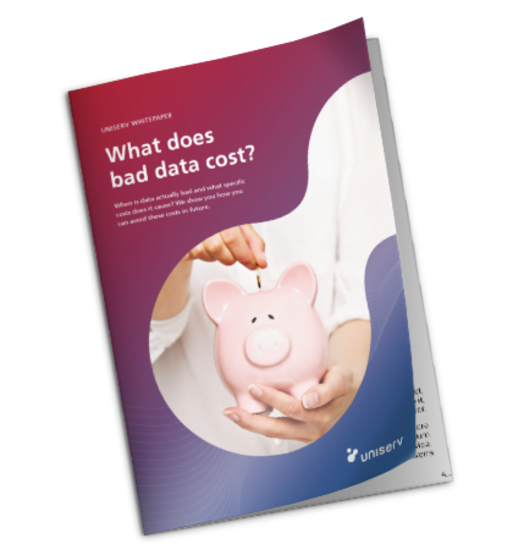Household formation in customer data management
Combining customers with the same address into households makes it easier to target the market at lower costs.
Household formation is the process of grouping individual customers based on their residential addresses. This broadens the view of their behavior and improves marketing and sales activities. Valid addresses are a prerequisite.


What are the advantages of forming a household?
The formation of households offers numerous advantages – both strategic and operational:
- Holistic view: Companies gain a 360-degree perspective on households rather than just individual customers. This creates a better understanding of relationships, e.g., who shops together or signs contracts. This opens the door to predictive selling, for example.
- Targeted customer approach: With the household view, offers and campaigns can be tailored more precisely to the actual living conditions of customers. An example: An electricity tariff for families can be offered in a more targeted manner if the household is recognized as such.
- More efficient processes: Consolidating customer data reduces duplicate mailings, saves postage, and conserves resources. Customer service also benefits from consolidated information.
- Cross-selling and up-selling potential: When all household members and their contracts are visible, offers can be placed in a more targeted manner. This could be supplementary insurance for family members, for example. A timely offer, such as for personal liability insurance, is also interesting when children living in the household reach a certain age limit and have to insure themselves.
- Risk assessment and fraud prevention: The formation of households can help to better assess risks. Banks and insurance companies can use this information to check whether multiple credit inquiries originate from one household.
What are the requirements for forming a household?
For budgeting to work successfully, certain conditions must be met:
Households can only be reliably formed if addresses are recorded correctly, uniformly, and completely. A uniform format includes house numbers, street names, and postal codes in a uniform format.
Customers should be identifiable by a unique ID. This prevents mix-ups and simplifies the merging of data records.
Whether two people live in one household must be determined using clear rules (e.g., identical address + last name) or intelligent matching algorithms.
Compliance with the GDPR is particularly important. Data aggregation must be carried out on a legally permissible basis, for example, on the basis of a legitimate interest, a contractual relationship, or consent.
The relevant data must be able to be consolidated and synchronized from various systems (CRM, ERP, online shop, call center, etc.).
What should customer data look like?
The quality of customer data is crucial for reliable household formation. People may live in the same house with the same address but in different apartments. Clean and consistent data can be used to generate a valid household view:

What does bad data cost?
The price for poor data quality is high. However, incorrect addresses and poor data quality are a cost factor that companies could easily avoid.
Read our paper ‘What does bad data cost?’ to find out how high such costs can be and how you can avoid them from the outset.
What role do central customer records play?
A central customer data record is a consolidated data record that contains the best, most complete, and validated information about a person. This is also referred to as the “single truth” about the customer.
Such a central customer data record is an important building block in household formation. First, a uniform data record is created at the individual level from several sources. Only on this basis can it then be checked whether several of these individuals belong to the same household.
Without these consolidated data records, it is possible that an individual may be assigned to a household multiple times or incorrectly. Or that households remain incomplete. In short: if you want reliable household data, you first need reliable personal data.
What are the benefits of forming households for individual industries?
In summary
Household formation is a key tool in modern customer data management. It creates a more comprehensive view of customer relationships, improves segmentation, and increases the relevance of offers. This is based on valid data, which can be created with the Data Quality Hub. Companies that establish this foundation benefit from more efficient processes, better decisions, and more satisfied customers.
FAQs on household formation in customer data management
Yes, if it is done on a legally permissible basis, e.g., to fulfill a contract or on the basis of legitimate interests. Transparency and compliance with the rights of data subjects are essential in this regard.
Ideally, matching should be automated and performed regularly, for example daily or whenever data changes. This ensures that the household view remains up to date.
Partially, yes. Sometimes soft features such as the same phone number, email domain, or common payment method can help. However, this method is less reliable than address orientation.
Possible key figures include, for example, the household hit rate, the number of reduced duplicate entries, or additional sales generated by targeted household campaigns. A decrease in wastage in mailings is also an indicator.
You might also be interested in:




